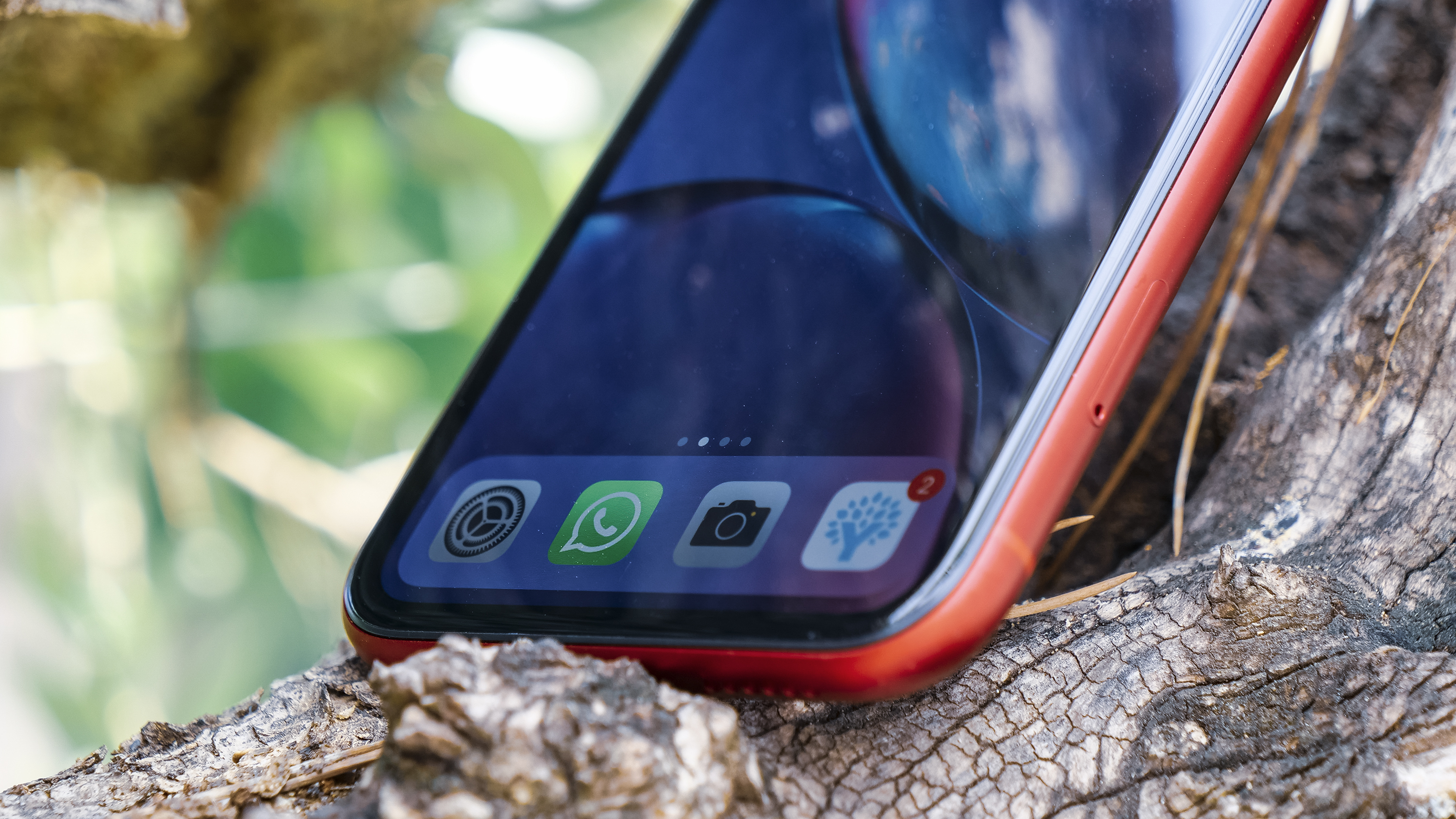Why you can trust TechRadar
The design of the iPhone XR is both familiar and novel and for those used to the home button, its loss is going to be quite a jolt. It comes with a benefit though: the iPhone XR is all-screen on the front (bar the notch at the top) and gives you a more striking feel in the hand overall.
The rounded edges, as mentioned, are still in the same Ive-designed vein, feeling nice to the touch, and the metal back (finished in aluminum and glass, replacing the steel of the iPhone XS pair) also feels premium.
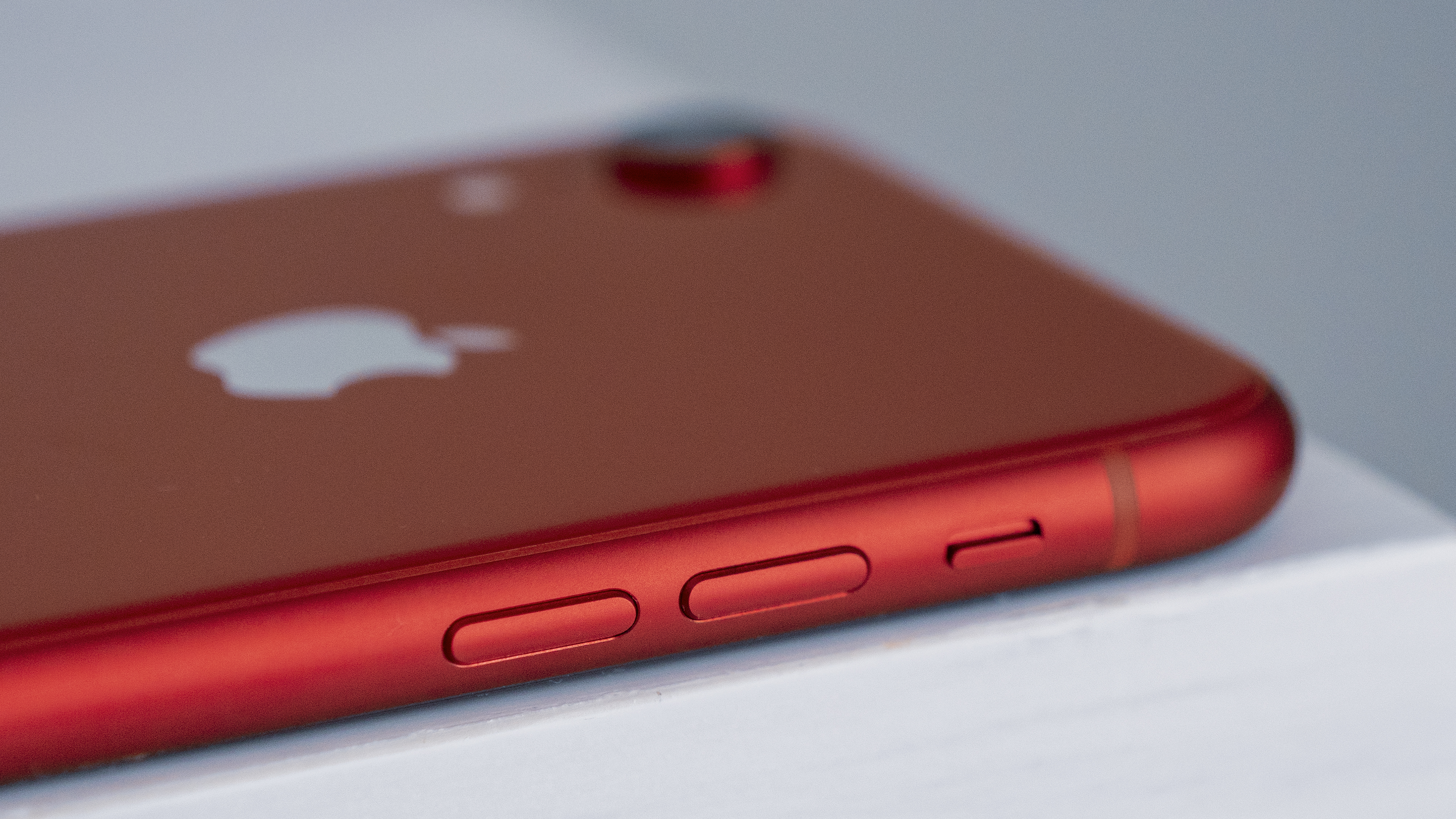
The glass on the front of the iPhone XR is meant to be among the strongest in the industry, and it’s the same material as on the iPhone XS – although we should warn you that we managed to either scratch or put a hairline fracture (we're not sure which, as it's so slight) on our iPhone XS within weeks.
As for our iPhone XR a year on from launch, there are a number of small scratches on the screen, although they're only really noticable when the screen is off.
The rear of the phone isn't the same strength of glass, but looking at the myriad crazy-paving iPhone screens on the train to work it appears the front of the phone bears the brunt of crashes anyway.
The iPhone XR has the same button layout as 2017's iPhone X, with the large Siri / lock button where the power key was previously, and the volume buttons and silencer rocker on the right.
It's brilliant being able to mute the handset with a simple click on the side, but it still easily turns itself to the 'sound blaring' setting when you take it out a pocket or similar, meaning you'll get tunes blaring out, and only after a few seconds of glaring around to see who's left their phone's sound on will you realize it's, well, you.
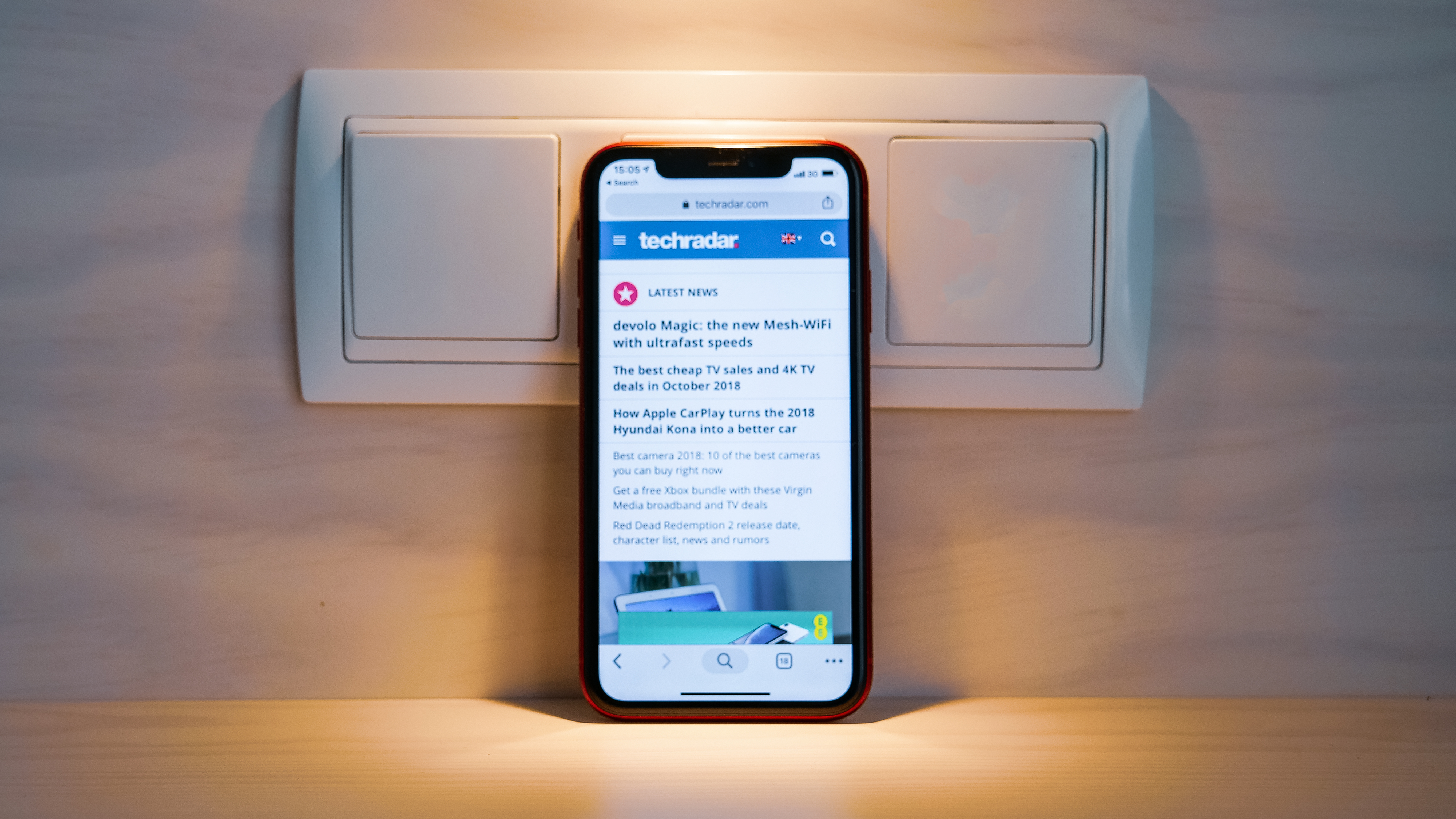
The bottom of a new iPhone is still sadly shorn of the headphone jack – and no, to answer a question posed to us the other day, there's no chance of Apple ever bringing it back. Removing it from within the chassis offers too much space for designers to play with, so you're stuck with the Lightning connector on the bottom for getting audio out if you prefer things wired.
What's annoying here, however, is that Apple has decided to remove the adaptor from the box, where it was present with the iPhone X.
You basically won't be able to use your expensive cans you already own unless you pay a bit more for a plastic dongle to convert your normal headphone jack to the Lightning connection needed.
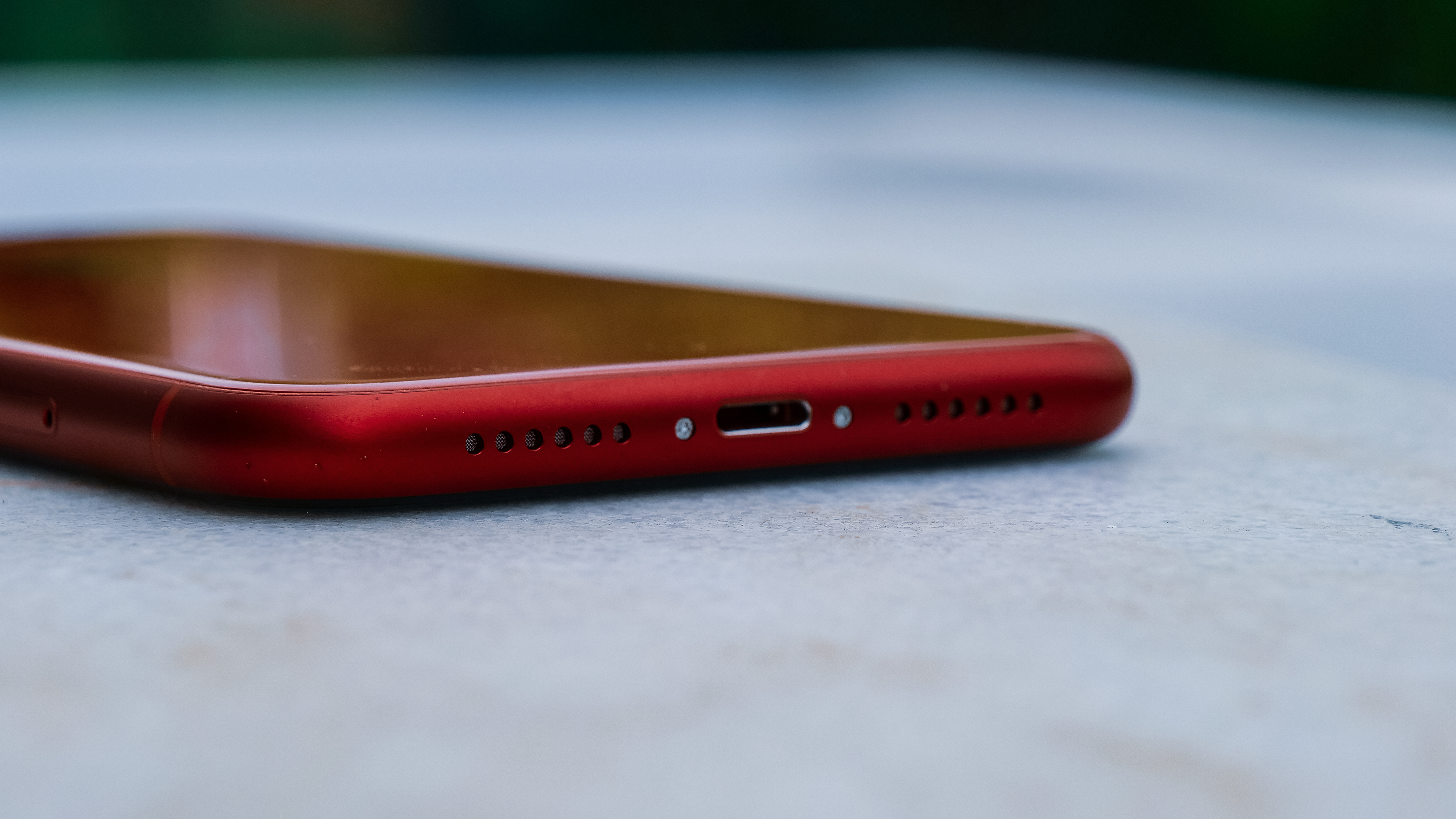
The speakers top and bottom emit stereo sound (you can also record video in the same way) although they’re not louder like on the iPhone XS pair, so you’ll not get the same level of volume or clarity pumping out.
That said, you will be able to take it into the shower to continue the tunes, although the XR is 'only' IP67 rated. We say 'only' as the iPhone XS pair are capable of being submerged for longer, as they're IP68, but in reality the level of water resistance on the iPhone XR is more than good enough for most people, meaning you can wash it if things are getting dirty.
There are plenty of color options too. You can play it safe with White or Black, or opt for something a little more funky with Blue, Yellow, Orange and Red choice all up for grabs.
Unlikely the previous ultra-colorful iPhone - the plastic-bodied iPhone 5C - the iPhone XR has a metal frame and glass rear. We've found over time that small damage to the metal frame (little drops here and there) will chip away at the colored paint, revealing a silver underbelly, which can make the handset look a little messy.
It's certainly not a bad idea to consider an iPhone XR case to keep the handset fresh, and increase the grip as the premium design doesn't offer up much resistance in the hand.
iPhone XR: screen
- 6.1-inch Liquid Retina LCD display
- 326 pixels per inch
If you're new to the all-screen design, let's get something out of the way right now: yes, the iPhone XR has a notch at the top. It encroaches into the screen, and it's no coincidence that Apple chose the 'planet' motif to advertise these phones, the black backdrop of which conveniently hides the slice taken out the top of the screen.
You will get used to this after a short while – it’s generally not that bad watching films generally, but it can chop out key information on some movies. However, the notch contains the important elements of the Face ID camera, the front-facing snapper for selfies, and all the other sensors in there which help your phone to work its magic.
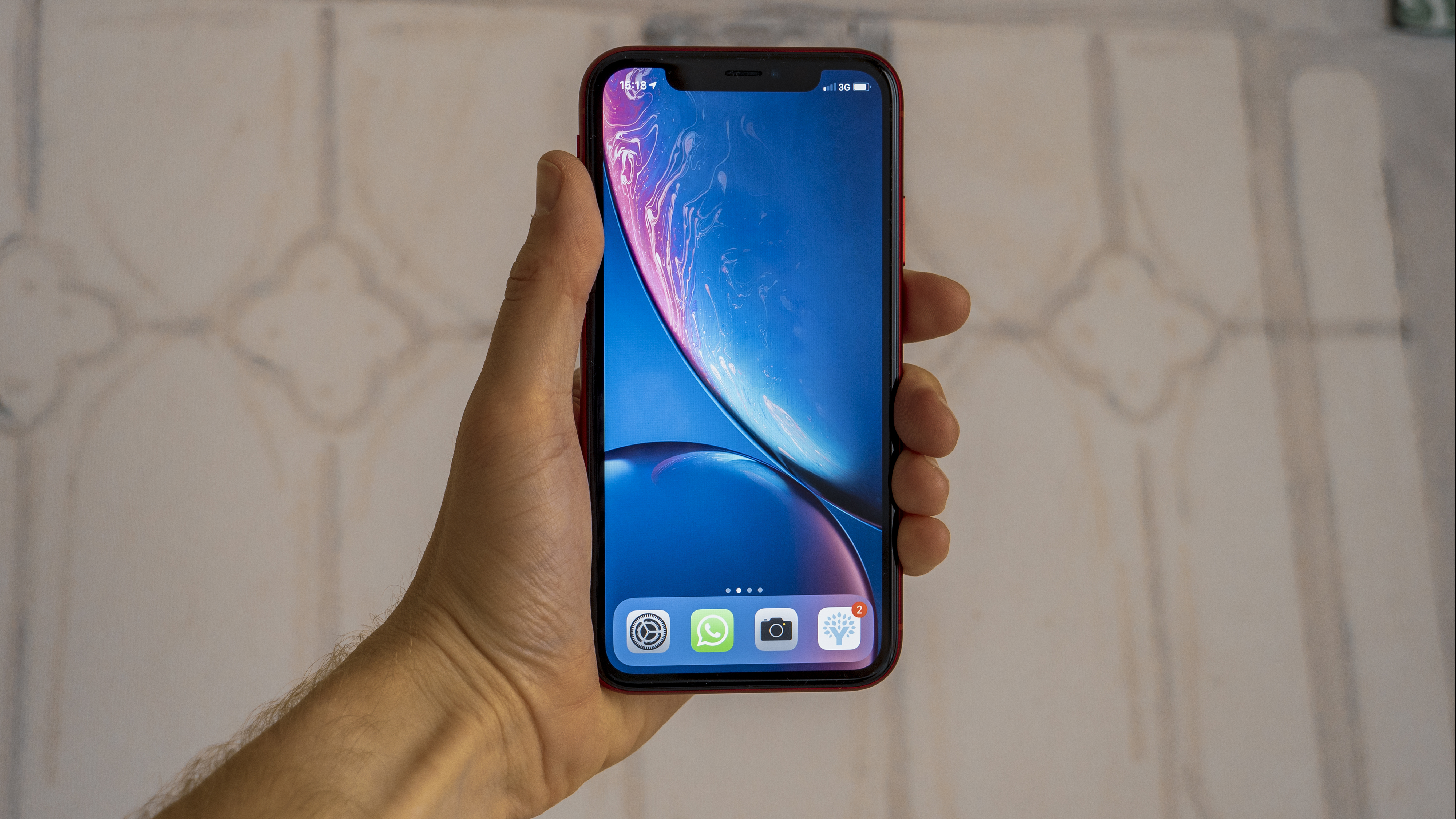
The overall screen quality, as ever with an iPhone, is excellent, and the new 6.1-inch Liquid Retina LCD technology does a good job of delivering sharp lines and punchy colors.
However, compared to the iPhone XS, it's not quite as good quality – the poorer black reproduction is an obvious difference thanks to using an LCD screen, and the sharpness isn't there either.
We also noted that some apps look a little low-res – the text in WhatsApp, for instance, doesn’t seem as sharp and that's because, well, the screen isn't as sharp.
Apple took great pains to tell us that the Liquid Retina display is one of the most advanced on the market, having been custom made for the brand to allow for the fully-rounded edges of the display that are uniform top and bottom of the phone.
That's fine, but you're not getting as many pixels packed in there, with a density of 326 pixels per inch compared to the 458 of the iPhone XS pair.
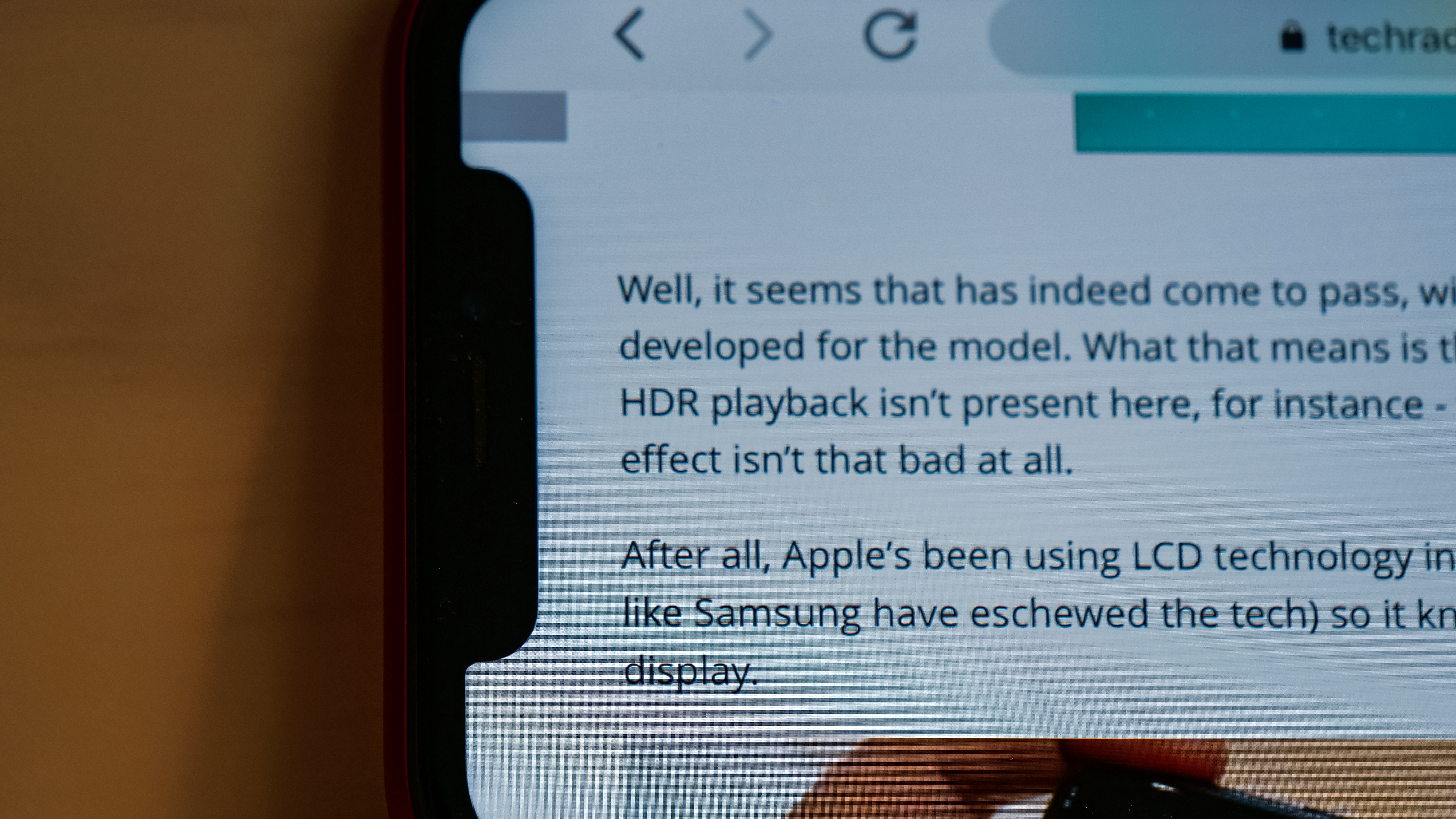
What's slightly annoying about the way Apple is presenting the iPhone XR is that there's this idea that the screen is 'edge-to-edge'. It's really not, thanks to that chunky old bezel around the sides of the phone, which really diminishes the feeling of quality when this handset is placed next to the iPhone XS.
Had Apple described the handset as 'all-screen' or just 'button-less' it would paint a fairer picture – there's just too much space taken up around the sides to call this truly edge-to-edge, especially when you see some of the handsets from the likes of Xiaomi or Oppo in China that really push things to the limit.
The iPhone XR’s screen also doesn't support HDR, which may not matter to most, but you won't get the same crisp and bright images when watching movies on the go. It can support the HDR style, so things don't look too bad, but it's not quite got the peak performance.

You won't notice this in isolation, as the test footage we watched still seemed clear enough to the eye, but it’s something else you’ll notice if look at this phone side by side with the XS – and it's another area where you're sacrificing to pay a little less.

Gareth has been part of the consumer technology world in a career spanning three decades. He started life as a staff writer on the fledgling TechRadar, and has grew with the site (primarily as phones, tablets and wearables editor) until becoming Global Editor in Chief in 2018. Gareth has written over 4,000 articles for TechRadar, has contributed expert insight to a number of other publications, chaired panels on zeitgeist technologies, presented at the Gadget Show Live as well as representing the brand on TV and radio for multiple channels including Sky, BBC, ITV and Al-Jazeera. Passionate about fitness, he can bore anyone rigid about stress management, sleep tracking, heart rate variance as well as bemoaning something about the latest iPhone, Galaxy or OLED TV.
